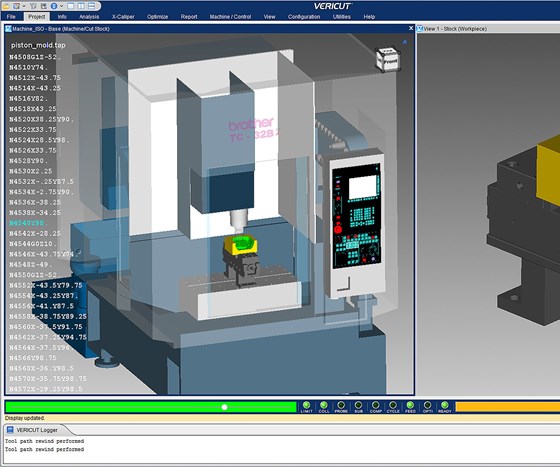Software Performs CNC Simulation Plus Physics-Based Optimization
IMTS 2018: Version 8.2 of CGTech’s Vericut optimization and verification software simulates all types of CNC machining.
Version 8.2 of CGTech’s Vericut optimization and verification software simulates an expansive range of CNC machine types and manufacturing operations. The list includes drilling and trimming, waterjet machining, riveting, and milling and turning. It can simulate robots and parallel kinematic/hexapods as well. It operates independently but can be integrated with CAM systems.
During machine simulations, the software detects collisions and near-misses between all machine tool components and user-defined objects. Users can also set up “near-miss zones” around the components to detect over-travel errors. In Review Mode, the software can simulate machine movements while stepping or playing backwards.
A customizable heads-up display (HUD) shows the NC program or status item on top of Views. The HUD monitors the NC program and important machine functions while keeping simulation Views as large as possible. Program Alerts highlights errors and warnings, and, when running multiple NC programs, it highlights programs with errors in red.
Force is a physics-based NC program module that analyzes and optimizes cutting conditions throughout CNC program operations. Force is available for turning and milling machines. Force Turning facilitates changing and limiting chip thickness and feed rates while cutting in corners, diameters and tight spaces. Force Calibration creates Force Material Files from dynamometer test data. It includes a Design of Experiment (DOE) planner, validates data and shows statistics.
The software also adds realism to additive simulation to improve verification of additive build processes. These processes include the buildup of overlaps, acute corners, tight overlapping bead paths and double deposits (overlapping start/end points). An alert message will appear when the laser focal point is too far from the part’s surface, when there are excessive overhang conditions or when there is too much build up at corners and overlaps.



